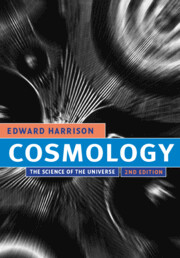Book contents
- Frontmatter
- Contents
- Preface
- Introduction
- PART I
- PART II
- 10 Curved space
- 11 Special relativity
- 12 General relativity
- 13 Black holes
- 14 Expansion of the universe
- 15 Redshifts
- 16 Newtonian cosmology
- 17 The cosmic box
- 18 The many universes
- 19 Observational cosmology
- PART III
- Appendix – Fundamental quantities
- Index
13 - Black holes
from PART II
Published online by Cambridge University Press: 05 June 2012
- Frontmatter
- Contents
- Preface
- Introduction
- PART I
- PART II
- 10 Curved space
- 11 Special relativity
- 12 General relativity
- 13 Black holes
- 14 Expansion of the universe
- 15 Redshifts
- 16 Newtonian cosmology
- 17 The cosmic box
- 18 The many universes
- 19 Observational cosmology
- PART III
- Appendix – Fundamental quantities
- Index
Summary
Confinement to the Black Hole … to be reserved for cases of Drunkenness, Riot, Violence, or Insolence to Superiors.
British Army regulation (1844)GRAVITATIONAL COLLAPSE
Stars are luminous globes of gas in which the inward pull of gravity matches the outward push of pressure. The nuclear energy released in the interior at high temperature is radiated from the surface at low temperature and this low-temperature radiation sustains the chemistry of planetary life.
But to each star comes a day of reckoning. Its central reservoir of hydrogen approaches exhaustion and the star begins to die. The tireless pull of gravity causes the central regions to contract to higher densities and temperatures, and as a consequence the outer regions swell up and the star becomes a red giant. A star like the Sun then evolves into a white dwarf in which most of its matter is compressed into a sphere roughly the size of Earth. Many stars end as white dwarfs, slowly cooling, supported internally against gravity by the pressure of electron waves (as in ordinary metals).
More massive stars do not give up the game so easily. Gravity is stronger in these stars and their central regions continue to contract to even higher densities and temperatures, thus enabling them to draw on the last reserves of nuclear energy. These stars become luminous giants squandering energy at a prodigious rate. Soon their reserves of nuclear energy are exhausted. Only gravitational energy remains with its fatal price of continual contraction.
- Type
- Chapter
- Information
- CosmologyThe Science of the Universe, pp. 246 - 269Publisher: Cambridge University PressPrint publication year: 2000

